It has been an awfully long time since my last post, the reason being my preoccupation with the festival season which had me on my toes, not allowing much time for anything other than sundry cleaning works, shopping, and other household chores. The good thing about all these festivals and accompanying festivities is that, although tedious, you have to get on with the onerous task of cleaning the house; something which I meticulously avoid till pushed to the wall.

Autumn is almost fully booked with various rituals and festivals.
Diwali is the most important festival in the Hindu calendar.The word
Diwali is derived from the word
Deepavali that means "a row of lights".
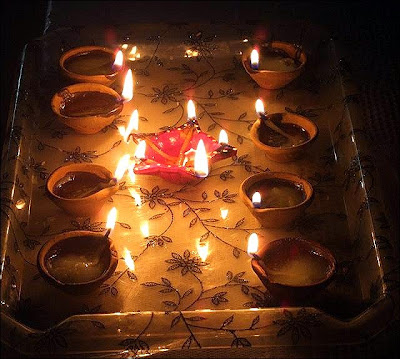
Before
Diwali the house is spring cleaned and white washed. On
Diwali day itself, the house is adorned with marigold flowers, colourful
rangoli patterns are made on the main entrance and sweets are exchanged among acquaintances and friends.
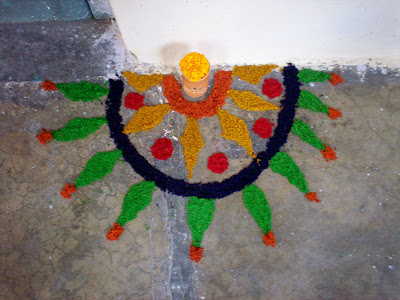
As the night falls, preparations are made for
LakshmiPooja or the worship of Goddess
Lakshmi-Goddess of wealth and prosperity.It is believed that Goddess
Laxmi will visit the cleanest house first. After the puja, rows of earthen lamps and candles are lit to usher in light on the dark no moon night.
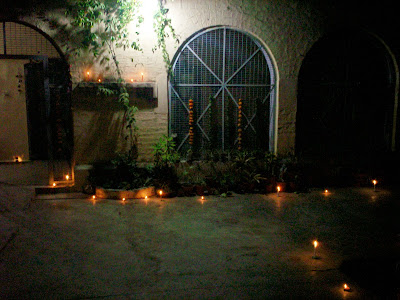
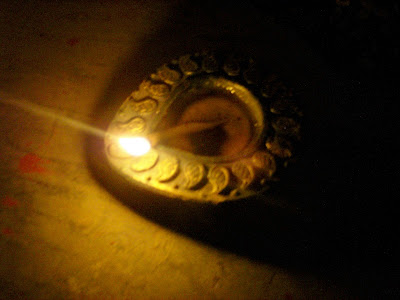
Then crackers are bursted without which
Diwali festivities are incomplete. This part of the celebration is the main attraction for children for which they wait eagerly the whole day.With the bursting of crackers and fireworks Diwali celebrations come to an end.
Diwali is a festival which is celebrated with equal fervour throughout the country and many parts of world, among all age groups irrespective of caste,creed and socio-economic background.
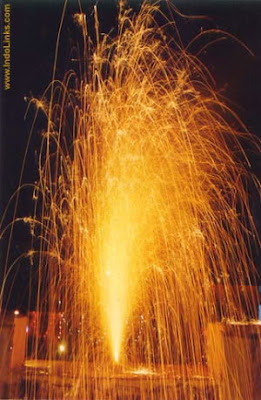
Diwali date comes 20 days after the popular festival of
Dussehra or
Vijaya Dashmi and marks the return of mythological lord
Rama from exile after defeating the ‘Demon king’
Ravana. The fall of
Ravana is celebrated as
Dussehra and on this day huge effigies of
Ravana, filled with firecrackers, are burned all over the country.


Over with the festivals of Dussehra and Diwali, and with Christmas and New Year to look forward to, I am back in routine to my garden in company of my ‘a little grown up’ little one, and Bruno.


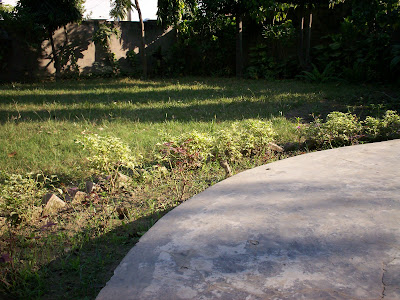 Roses are enjoying the drop in temperature to the fullest, rewarding my garden with exuberant blooms.
Roses are enjoying the drop in temperature to the fullest, rewarding my garden with exuberant blooms.
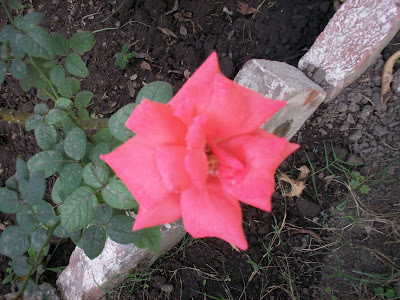
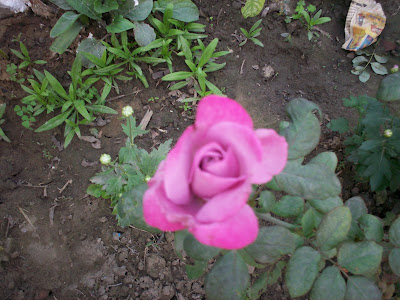 Ornamental Peppers are turning a fiery shade of red...as fiery as their taste.
Ornamental Peppers are turning a fiery shade of red...as fiery as their taste.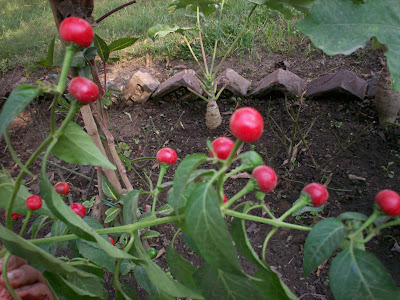 The Garlic vine or Cydista aequinoctialis ,a harbinger of winters, blooms, spraying its very mild, and if I may add, not-so-pleasant garlicky aroma to the surroundings;
The Garlic vine or Cydista aequinoctialis ,a harbinger of winters, blooms, spraying its very mild, and if I may add, not-so-pleasant garlicky aroma to the surroundings;
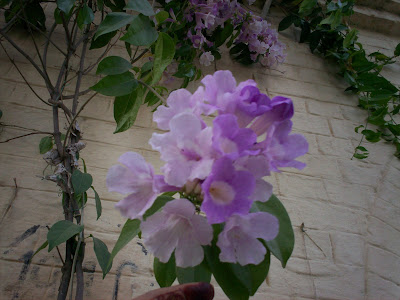
 Marigold's blooming time is perfect.It forms an integral part of Indian festive decorations.
Marigold's blooming time is perfect.It forms an integral part of Indian festive decorations.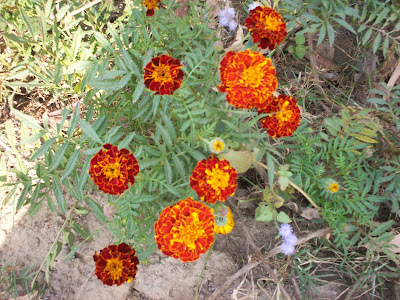 Lady of the Night, or Cestrum Nocturnum spreads its intoxicating aroma as the night falls.
Lady of the Night, or Cestrum Nocturnum spreads its intoxicating aroma as the night falls.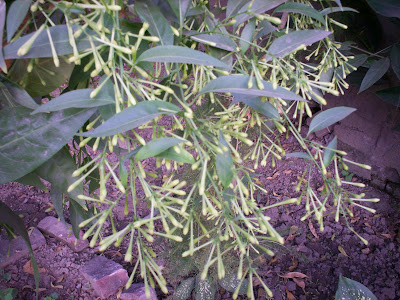 Bougainvillea basks in the sunshine....
Bougainvillea basks in the sunshine....
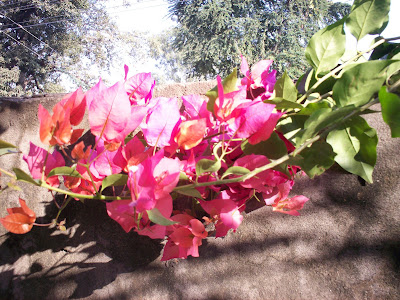 Poinsetttia gearing up my garden for Christmas.
Poinsetttia gearing up my garden for Christmas.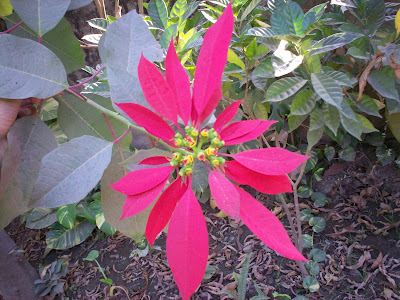 And how can I forget the 'Mums' of Garden, Chrysanthemums, blooming in myriad shades and colours.
And how can I forget the 'Mums' of Garden, Chrysanthemums, blooming in myriad shades and colours.
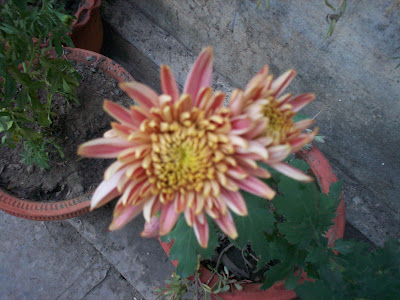 The green leafy veggies, like mustard, fenugreek, spinach, ready for harvest;
The green leafy veggies, like mustard, fenugreek, spinach, ready for harvest;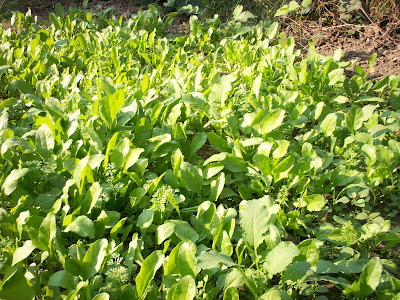
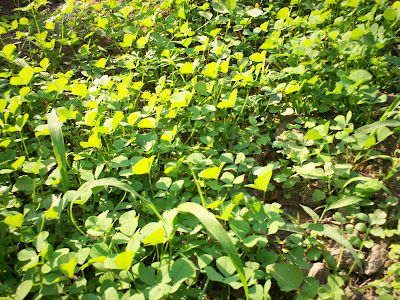 All in all, my plants are very excited about the coming winters...and I am excited too!!
All in all, my plants are very excited about the coming winters...and I am excited too!!









